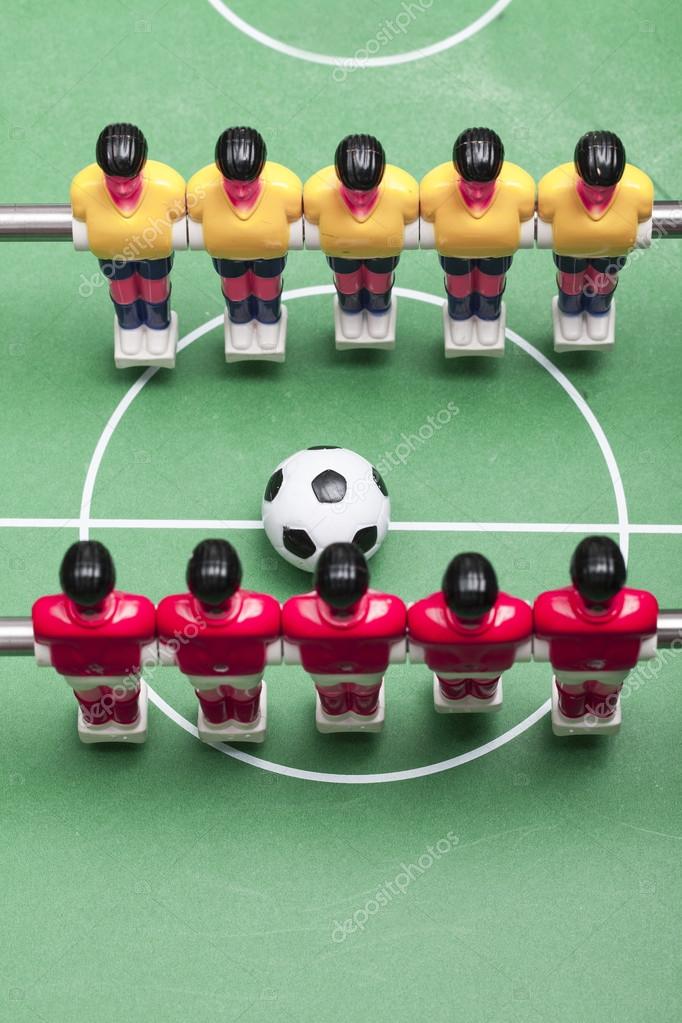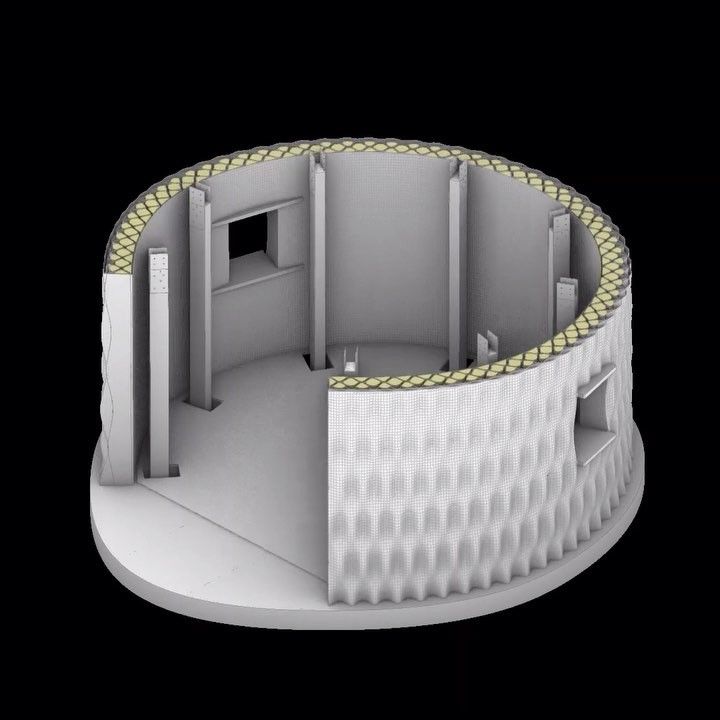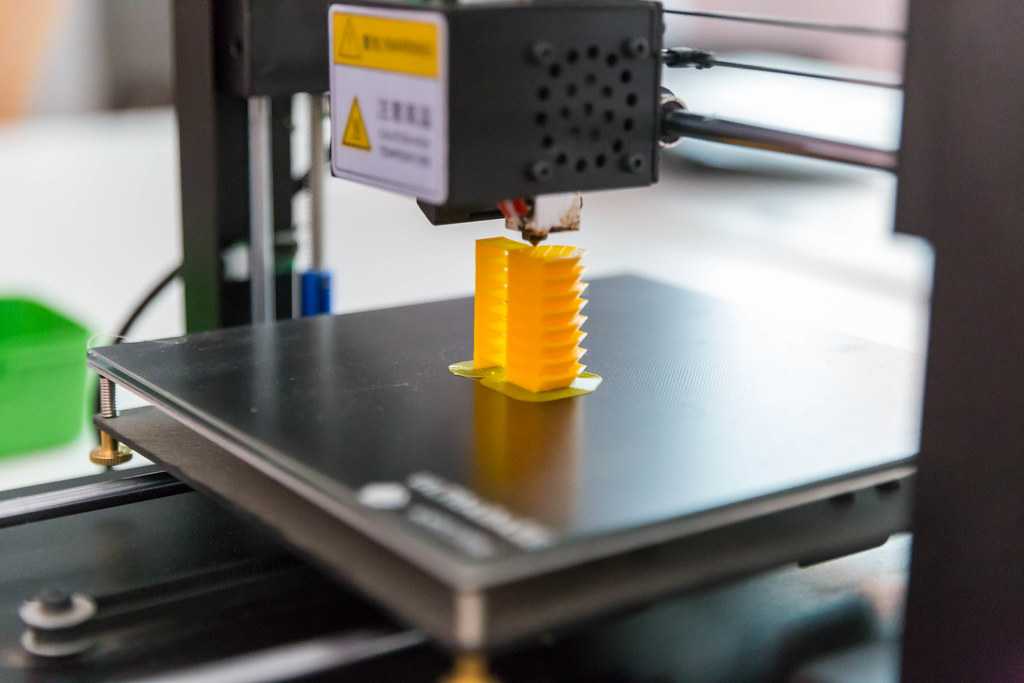3D printed foosball players
How To Build a 3D Printed Foosball Table
In collaboration with Bob from YouTube's "I Like to Make Stuff," we design, prototype, and assemble a 3D Printed Foosball table from scratch. Read on to see how it went.
Alec Richter
March 9, 2017
For a long time now, since before I even started here at MatterHackers, Dave has wanted a foosball table in the office. It was a project idea that got tossed around for a while, and something I casually worked on; designing parts for it in my spare time between articles and other projects. We spit-balled ideas about how it should be put together, what should be 3D printed, what should be purchased, what needed to be designed, what needed to be built, and would it need any electronics. Initially, the plan was to print one Iron Man and one Stormtrooper player, then sand, polish, mold, and cast them. That plan seemed like it would produce the sturdiest players with the best finish. But where would be the fun in that? So we scrapped that idea and went with 3D printing anything that could be printed.
The Foosball table in all its 3D printed glory and wood worked glory.
We Needed Help - Enter Bob from YouTube's "I Like To Make Stuff"
Foosball tables don't usually have electronic scorekeepers, but we wanted to incorporate as many different mediums as we could. Dave and I had no clue about programming or Arduinos or any of that, and that is where Bob from I Like to Make Stuff comes in. We contacted him and wanted to get him involved with the project by helping us design the electronics and scorekeeper mechanism. As all things do, this evolved and instead of Bob helping us design just the scorekeeping system, we had him fly out to California and design and build the table while we take up the printing.
Now, with Bob in town, we held a meetup and debuted the table in the eleventh hour of construction. It played well despite a couple hiccups, and everyone involved had a great time assembling the foosball table and hanging out afterwards.
Building the 3D Printed Foosball Table
Now, we knew that all the components of the table couldn't be printed, so below is a list of items that we had to purchase. Other than that, the table has over 140 printed parts!
Other than that, the table has over 140 printed parts!
Purchased Parts
(4) Foosball Leg Levelers
(4) Matching Nuts
(26) 1/4" x 1 1/2" Button Head Machine Screws.
(26) 1/4" Hex Nuts
(26) M3 x 35mm Socket Head Cap Screw
(26) M3 Nuts
(1) 1/4" Steel Rod
(5) 10' x 1/2" Electrical Conduit
(1) 6pk of Foosballs.
(1) Pack of 5 Minute Epoxy.
(2) Vinyl Tabletops
Various Fasteners for Table
Designing the Parts
Does that make you want to build your own Foosball table now? It's a pretty extensive list, but it's a lot easier than you might think. The hardest part is having the power tools to cut the pieces of the table. But designing and printing the 146 (that's not a typo) individual parts that went into this build is more time consuming to print than it was to design them.
Rods
We didn't want to have to source these parts from anywhere expensive or too far past DIY, so we opted to scour the aisles at our local hardware store.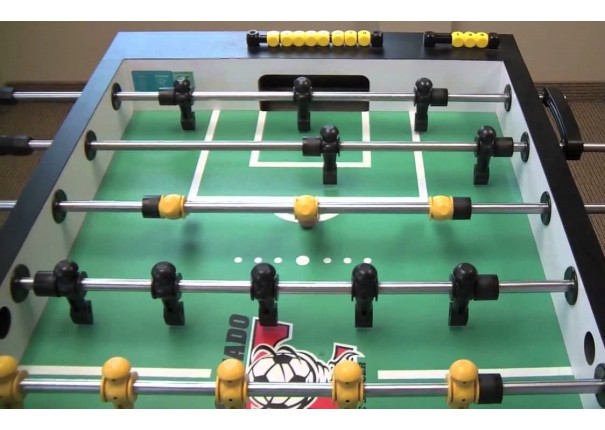 The cheapest and good enough product was some 1/2" electrical conduit. When measured with a pair of calipers, these pipes actually had an outer diameter of 0.70", so all parts based on the rod had to be adjusted to compensate, as regulation rods are 5/8". These were cut to size based on the specifications designed by Bob.
The cheapest and good enough product was some 1/2" electrical conduit. When measured with a pair of calipers, these pipes actually had an outer diameter of 0.70", so all parts based on the rod had to be adjusted to compensate, as regulation rods are 5/8". These were cut to size based on the specifications designed by Bob.
Players
First thing the table needed was some players, and the easiest thing to do was to see what someone more creative and more talented than I had done already. Thingiverse was promising, with user Johanson59 and his Stormtrooper and Iron Man foosball players being a much better set of players than standard foosball players. In order to fit these players to the electrical conduit we had purchased, I bumped up the scale of the players to 110% and the players fit well; not too loose, not too tight. They survive a stray ball to the face, the players were printed in MatterHackers PRO Series Nylon. In the MatterHackers Design Library, these are already scaled to fit electrical conduit.
Print Count = 26
The Iron Man team was designated Team "I Like To Make Stuff" with a nice coat of glossy orange spray paint.
The Stormtroopers spray painted white and designated Team MatterHackers.
We figured that if anything were to need replacing, it would be the feet. With constant bashing and smashing against the ball, I opted to slice off the foot from the player, add a T-shaped post to it, and cut a matching hole in the player. However, in doing so I had also weakened the players legs; the hole cut in the legs significantly decreased the cross section of them and the surface area for layer adhesion. The solution was to cut a hole in the feet and a cavity in the body to allow a nut and bolt to be threaded through the two pieces and have some compression force holding the two together. These were printed in MatterHackers NylonX for durability and flexibility.
Print Count = 52
The feet were installed into the bottom of all the players, and modified to feature both of our logos.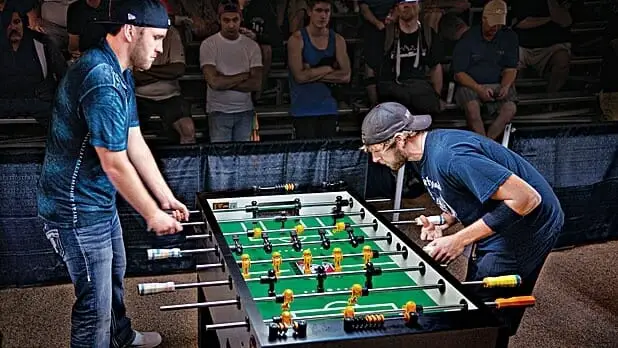
Ball Entry
Rather than try and design many of the printed parts from scratch, it was easier to look at other parts that actually existed and are used on professional tables. Luckily, some of these parts included dimensions in their images, making it a lot easier to design these parts in Solidworks. The Ball Entry was really simple, with a couple spheres offset from each other to make the drop, a half cylinder extruded to make the lip, three holes with 45 degree chamfers, and fillets on most edges. Designing these was half based on the existing part and half on what would look good and function for what we needed.
Print Count = 54
The Ball Entry is installed on both sides, about center.
Bumpers
For the bumpers, it would be preferable to have them easily slide onto the rod and be loose, instead of staying on tight but be hard to move down the rod. With a 0.35" radius pipe, I added .01" of tolerance to it, which allowed for a tight, but smooth movement along the rod for easy assembly.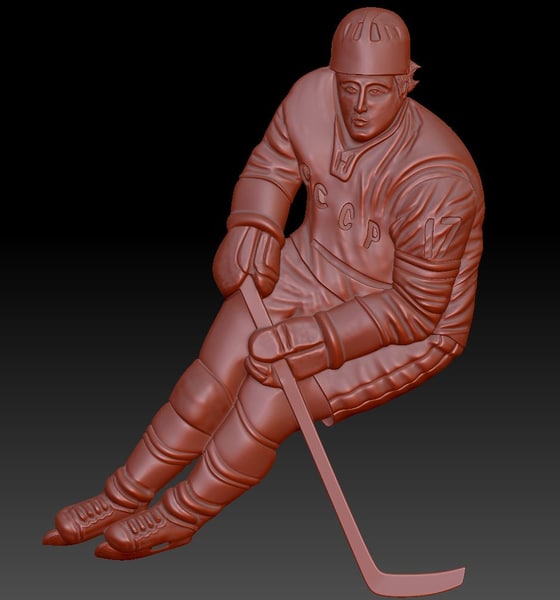 The shape of the bumper didn't really matter, I just thought the three larger cylinders looked better than one solid cylinder, but one would work just as well. To give a little cushion, the bumpers were printed in MatterHackers PRO Series Flex. Each pipe needs two bumpers, and with eight pipes it needs 16 bumpers.
The shape of the bumper didn't really matter, I just thought the three larger cylinders looked better than one solid cylinder, but one would work just as well. To give a little cushion, the bumpers were printed in MatterHackers PRO Series Flex. Each pipe needs two bumpers, and with eight pipes it needs 16 bumpers.
Print Count = 70
The Bumpers are installed on either side of the players on each rod.
Handles
In researching the different styles of handles, some being rigid and others being rubber, I found that Taylor played foosball regularly in college and he felt rigid was way better. The design for the handles was based on only a couple measurements in the product page, so a lot of it was winging it. It didn't really matter the shape of it, just that it was sort of ergonomic and fit over the electrical conduit. I printed eight of these in MatterHackers PRO ABS so we could acetone smooth it later if we wanted to, but they worked well enough without it.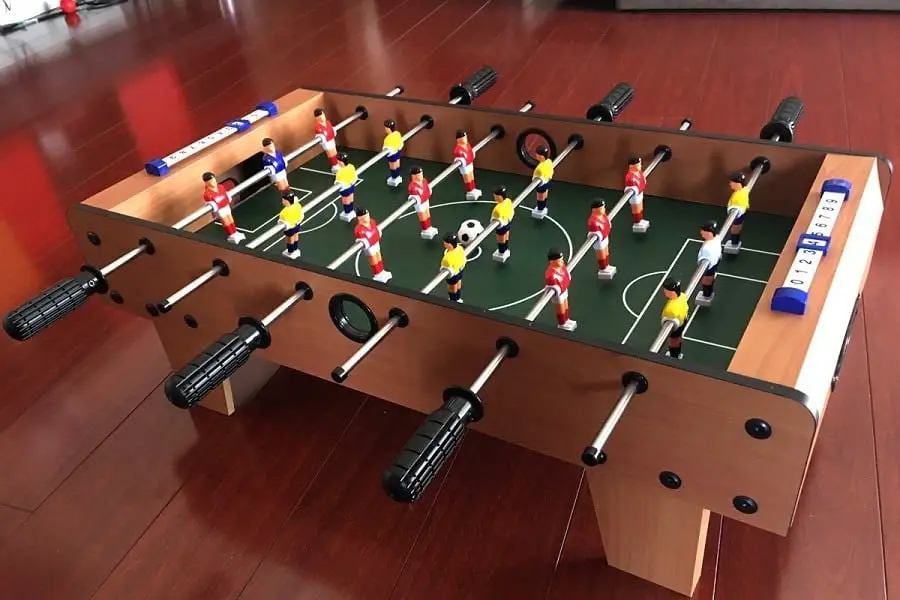 We used 5 minute epoxy to hold these on permanently as we could always print more if we have any issues with the rod, and this was the easiest way to attach them.
We used 5 minute epoxy to hold these on permanently as we could always print more if we have any issues with the rod, and this was the easiest way to attach them.
Print Count = 78
The Handles were epoxied onto the rods with four on each side of the table.
End Caps
To prevent players on the rival team from getting jabbed by a potentially sharp pipe, the electrical conduit needed some endcaps to go onto the side opposite the handles, but couldn't be attached permanently. In order to do this, they needed to be a friction fit, and since they didn't need to slide down the rod they could be difficult to install since they don't have to move far and need to stay on. The end caps were a simple design, and just needed to be a hollow cylinder without any sharp edges. The end of the end cap was made to be thicker than the side walls, so the fillet around the end didn't weaken the part by making it too thin. Only eight of these were needed, and they were printed in MatterHackers PRO Series Flex.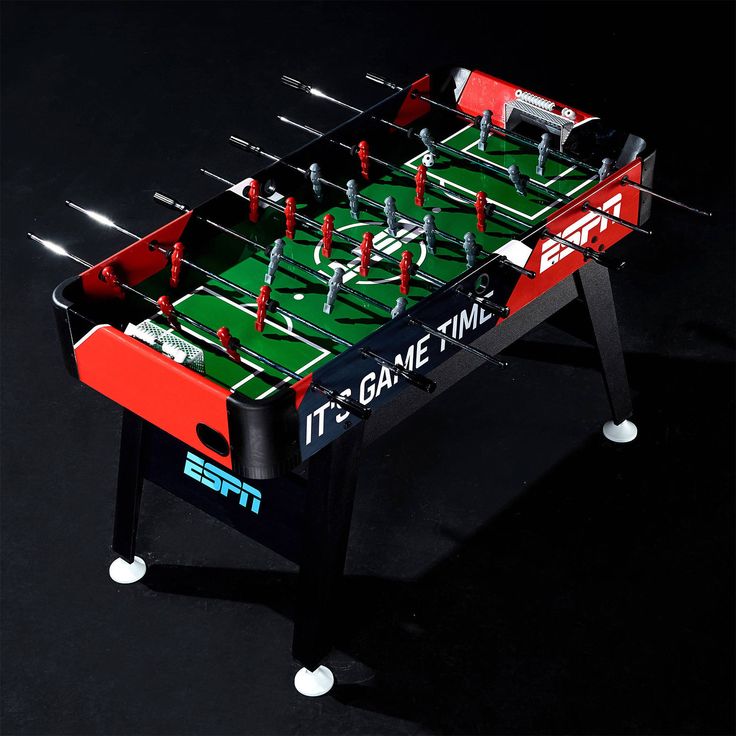
Print Count = 86
The End Caps were pressed onto the rods, opposite the handles.
Bushings
Instead of having the electrical conduit slide on bare wood or finding a decent bearing and designing an assembly to hold it in place, we opted on printing bushings in MatterHackers PRO Series Nylon and using the natural smoothness of the nylon as a bearing surface, which proved to work very well once the tolerances were sized properly and there was enough room to spin between the bushings and pipe. The actual shape of these doesn't matter, all that does is that there's enough flange to screw it into the table and the hole is large enough to let the pipe slide easily. We needed 32 of these: one on either side of the wood on either side of the table per eight pipes.
Print Count = 118
The Bushings are installed on both sides of every hole for the rods.
Score Keepers
Drawing inspiration from existing score keepers, I designed them to be large enough to fit embossed numbers on the face.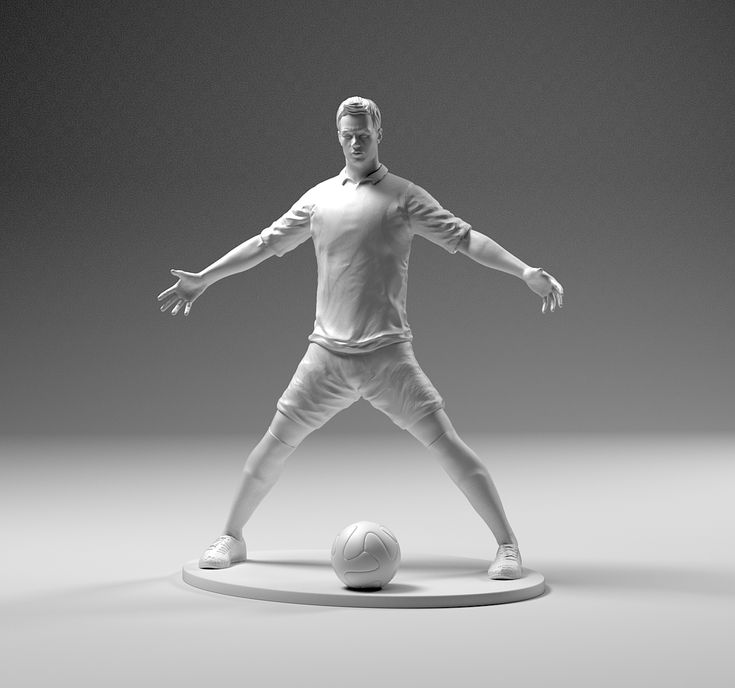 This was easier than hand painting on the numbers because I don't have a steady enough hand to do that. I felt the best way to model these was to make the profile of the scores, save a base model, then go in afterwards to modify it into the score pieces for 1 through 10, and then to be the left and right post that the rod will attach into. With these, I printed them in MatterHackers PRO PLA since they wouldn't need to be wear resistant in any form and purely needed to be cosmetic. With 10 score pieces and a right and left score post, I needed to print 24 individual pieces.
This was easier than hand painting on the numbers because I don't have a steady enough hand to do that. I felt the best way to model these was to make the profile of the scores, save a base model, then go in afterwards to modify it into the score pieces for 1 through 10, and then to be the left and right post that the rod will attach into. With these, I printed them in MatterHackers PRO PLA since they wouldn't need to be wear resistant in any form and purely needed to be cosmetic. With 10 score pieces and a right and left score post, I needed to print 24 individual pieces.
Print Count = 142
The Score Keepers screwed into either side of the table with a 1/4" rod through it.
Leg Nuts
Initially, our leg levelers were some small, quarter-sized feet and after looking at how good the rest of the table looked, it just wasn't up to par. We sourced a local foosball table company and bought some much nicer feet from them. Unfortunately, the bolt size was much larger than the T-nuts that came with the first set of feet, and the hardware store didn't carry T-nuts large enough either.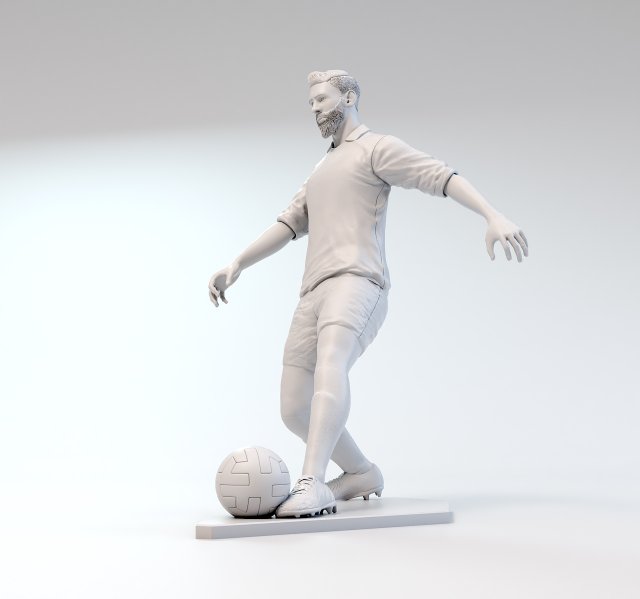 So we innovated. I took the feet with me and found a nut that fit, then modeled a cylinder matching the diameter of one of our forstner bits with a hexagon cavity slightly larger and deeper than the nut. A flange at the base and a hole straight through to accommodate the bolt from the feet. They worked perfectly and we screwed them into the base of each leg and threaded the feet onto them. One of these for each leg makes four, and since they just had to hold the nut in place, I just printed them in MatterHackers PRO PLA.
So we innovated. I took the feet with me and found a nut that fit, then modeled a cylinder matching the diameter of one of our forstner bits with a hexagon cavity slightly larger and deeper than the nut. A flange at the base and a hole straight through to accommodate the bolt from the feet. They worked perfectly and we screwed them into the base of each leg and threaded the feet onto them. One of these for each leg makes four, and since they just had to hold the nut in place, I just printed them in MatterHackers PRO PLA.
Print Count = 146
The Leg Nuts installed using a forstner bit and a hole drilled big enough to fit the bolt.
Tabletop
We had our graphic designer create a custom tabletop for us with both our logo and Bob's I Like to Make Stuff logo on competing sides of the table.
The Tabletop with competing MatterHackers and I Like To Make Stuff Logos.
Table
Bob took the lead on designing and building the table. To see what went into the construction of it, watch the video he made while out here in California.
To see what went into the construction of it, watch the video he made while out here in California.
This was a great project to work on and see come together, with the MatterHackers team and Bob converting the parking lot into a woodshop and finishing off with an awesome meetup with the community getting together and connecting through 3D printing.
For all the files used to make this model, we have all of them included in our Digital Design Library, free with MatterControl.
▷ foosball player 3d models 【 STLFinder 】
Foosball player
thingiverse
Foosball player
foosball player
thingiverse
printable foosball player - pet G
Foosball player
cults3d
Foosball player that can be used to build your own table.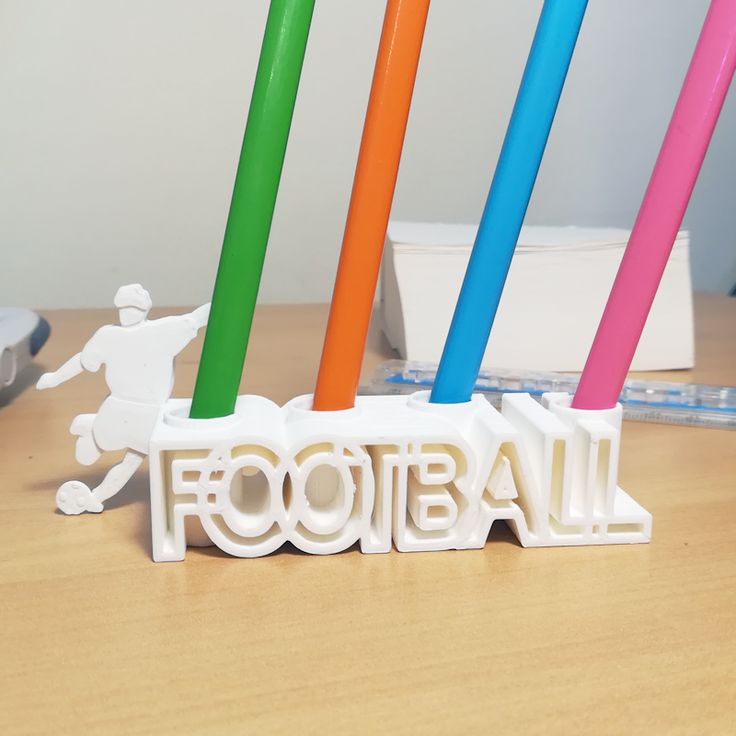 To mount the player onto a rod: i) post drill out the hole on the side of the body to fit with the shaft ii) post drill out the hole on the front of the body and secure the player to the...
To mount the player onto a rod: i) post drill out the hole on the side of the body to fit with the shaft ii) post drill out the hole on the front of the body and secure the player to the...
Foosball Player
thingiverse
This is a Foosball player I created in Autodesk Inventor 2013. ...Here is the link to that YouTube video: https://www.youtube.com/watch?v=XxB0Jk071Rc
Foosball Player
thingiverse
Foosball 1 and Foosball 2 are the upper and downer part of the player, which can be mounted without dismounting every other player on the pole. They are mountable with kind of a dovetail fit and the screw and the lock nut are placed through the. ..
..
Foosball Player
thingiverse
This is a foosball player for a Harvard foosball table (http://www.foosballsoccer.com/tables/goal-getter). This is my first model, to prove to myself that I can make useful and moderately complex models to print with my 3D printer. ...
Darth Vader Foosball Player
thingiverse
Foosball player with darth vader helmet
foosball player Lettner Scorer
thingiverse
Lettner Scorer foosball player for designing trophies or meshmix new heads for your foosball table
Tornado foosball player
thingiverse
Inspired by phookys printable foosball player ( http://www.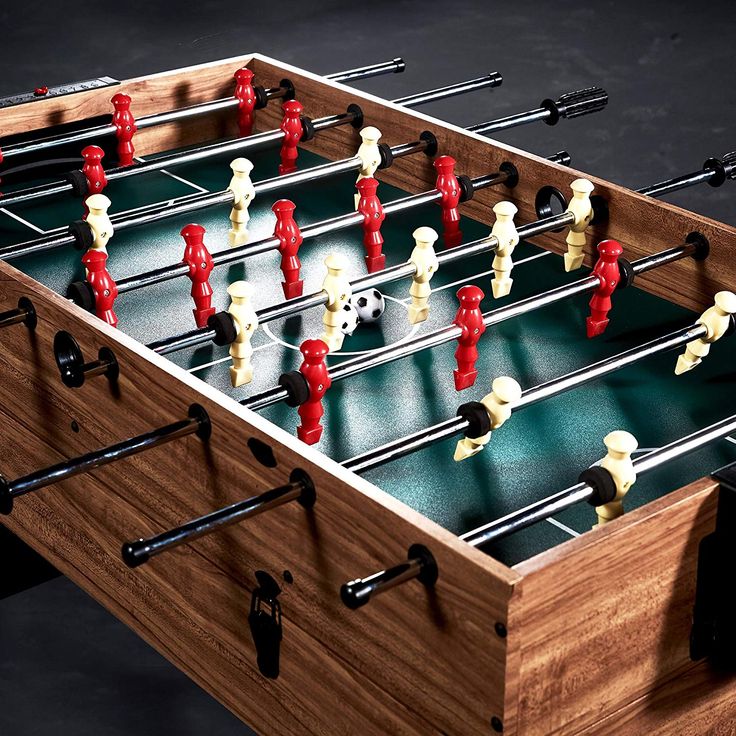 thingiverse.com/thing:1090 ). I wanted to make a player that was closer to the ones used on Tornado tables. I have included the blender file for anyone who would like modify it. UPDATE: I...
thingiverse.com/thing:1090 ). I wanted to make a player that was closer to the ones used on Tornado tables. I have included the blender file for anyone who would like modify it. UPDATE: I...
The Rock Foosball Player
thingiverse
Added Dwayne Johnson's head to a foosball player. Also made the hole for the bar 16mm to match my table. Should be fairly easy to change the diameter in tinkercad if you need to change yours. Also note, 16mm was a tad tight. ...probably need to...
Mini Foosball Player Template
thingiverse
For example, the picture shows a Harry Potter themed table with Gryffindor vs Slytherin players. You may need to scale a bit up or down depending on your printer settings. When printed on my priner, this fit perfectly onto the 1/2 in dowel rod. ...I...
You may need to scale a bit up or down depending on your printer settings. When printed on my priner, this fit perfectly onto the 1/2 in dowel rod. ...I...
Foosball Player
thingiverse
IT IS A GAME PIECE FOR A FOOSBALL TABLE WHICH I AM MAKING FOR MY PROJECT DUE SOON
Foosball Player 3D print model
cgtrader
The original design of Foosball Player! Real size model but you can ask me to scale it. This model was designed in CAD (Solidworks) system and translated in other formats. 3D model of the console for visualization and production on CNC machines...
Foosball Player 2 3D print model
cgtrader
The original design of Foosball Player! Real size model but you can ask me to scale it.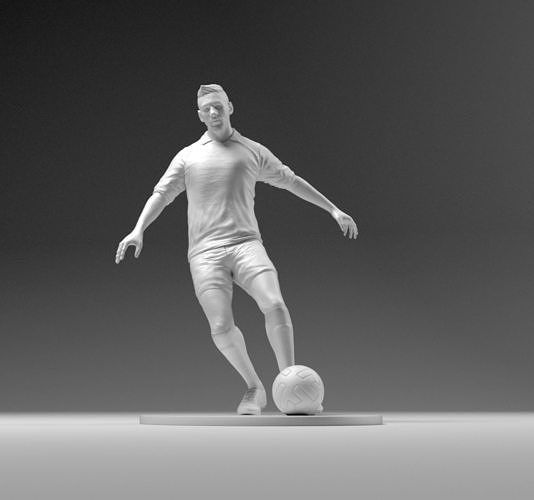 This model was designed in CAD (Solidworks) system and translated in other formats. 3D model of the console for visualization and production on CNC machines and...
This model was designed in CAD (Solidworks) system and translated in other formats. 3D model of the console for visualization and production on CNC machines and...
Stormtrooper Foosball Player
thingiverse
for 16mm rods diameter height = 114mm
Harvard Foosball Player
thingiverse
Harvard Fooseball Man Built in Solidworks, Supports added in MeshMixer. I printed it at 50% infill to give it a little more weight, similar to the other guys. ...Also added in a textured footbed for ball control similar to the stock pieces.
Printable Foosball Player
thingiverse
Our foosball table came with the creepiest dead-eyed foosmen possible. Here's a printable modernist alternative! Instructions These foosmen are designed to match the foosmen on our particular table....
Here's a printable modernist alternative! Instructions These foosmen are designed to match the foosmen on our particular table....
Cristiano Ronaldo foosball player
cults3d
Cristiano Ronaldo joueur de baby foot
Player
sketchfab
Player
Stangeklemme Rod holder Foosball with a player
thingiverse
Stangenklemme (Rod Holder) for Leonhard Pro Foosball Table.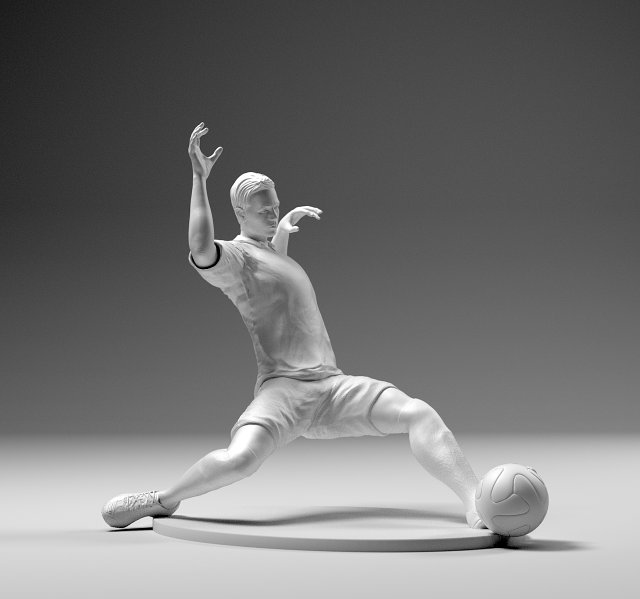 ...Mostly spread in Germany
...Mostly spread in Germany
Player
sketchfab
Player Ship model for a game project
Player
thingiverse
The Player character from Hello Neighbor.
Player
thingiverse
This is a player for a proyect called "minigol", a smaller version for the south american game "metegol" Print Settings Rafts: Doesn't Matter Supports: No Resolution: 0.3 Infill: 30 or higher
player
thingiverse
http://www.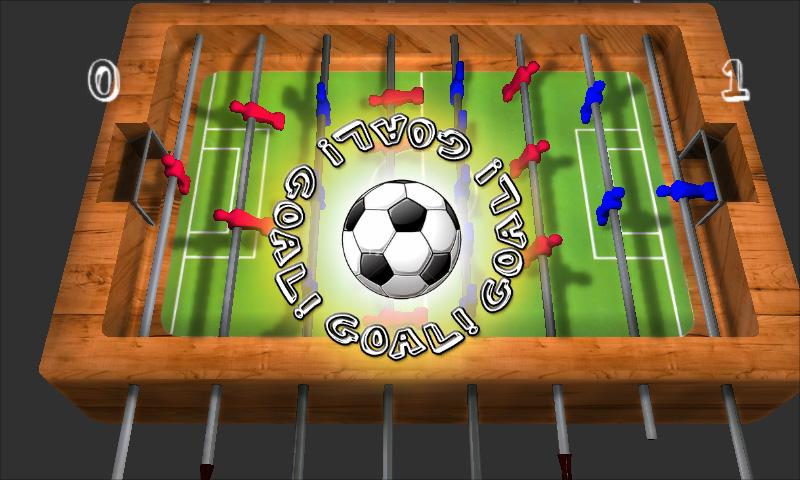 thingiverse.com/apps/customizer/run?thing_id=41524 Instructions Using the following options: ring_size = 18.14 InnerMessage = OutterMessage = Player 2 font_spacing = 0 Font = write/Letters.dxf ring_thickness = 1.6 ring_width = 6 font_size...
thingiverse.com/apps/customizer/run?thing_id=41524 Instructions Using the following options: ring_size = 18.14 InnerMessage = OutterMessage = Player 2 font_spacing = 0 Font = write/Letters.dxf ring_thickness = 1.6 ring_width = 6 font_size...
Mp3 player
grabcad
Mp3 player
airsoft player
sketchfab
Airsoft player
Player IPad
grabcad
Player IPad
LD player
grabcad
LD player
Player
sketchfab
No description provided.
Player
sketchfab
No description provided.
best items of the month - ID. INTERIOR DESIGN
On the eve of the largest international furniture exhibition i Saloni 2018 , we have collected the most interesting, in our opinion, novelties of famous brands and authors. Most will be presented for the first time during the days of the Milan Furniture Fair and at the following Milan Design Week immediately following it. Most of all, we were interested in conceptuality or a beautiful story behind this or that creation, as well as the designer’s special look at the modern context of the object.
1. Architectural carpets by Patricia Urquiola
A student of Achille Castiglioni and Vico Magistretti, Spaniard Patricia Urquiola came up with a collection of carpets for cc-tapis , giving birth to a geometric illusion of three-dimensionality with their optical illusion of three dimensions.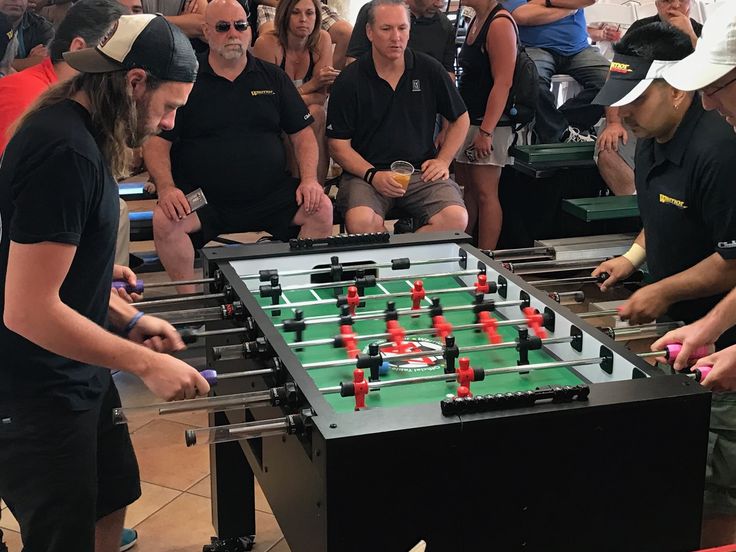 In the Rotazioni series (translated from Italian for “rotation”), she used repetitive cylindrical shapes: outlined in black, they resemble pipes stacked on top of each other. Each such "pipe" is painted in soft pastel colors: from bluish and lavender to the color of pale rust, and the contrasting combination and gradient add volume. In the Visioni series that preceded it, a similar 3D effect is created by rectangles and parallelograms, depicted in the same way as a cube is drawn on flat paper. Like all cc-tapis carpets, Urquiol's are hand-woven in Nepal from Himalayan wool and silk.
In the Rotazioni series (translated from Italian for “rotation”), she used repetitive cylindrical shapes: outlined in black, they resemble pipes stacked on top of each other. Each such "pipe" is painted in soft pastel colors: from bluish and lavender to the color of pale rust, and the contrasting combination and gradient add volume. In the Visioni series that preceded it, a similar 3D effect is created by rectangles and parallelograms, depicted in the same way as a cube is drawn on flat paper. Like all cc-tapis carpets, Urquiol's are hand-woven in Nepal from Himalayan wool and silk.
2. O‑Cap Chair by Jasper Morrison
For i Saloni 2018 Cappellini reimagined some of its timeless classics, adapting them to the conditions of modern life. For example, Jasper Morrison technically improved his famous leather chair Cap-Chair, released by the factory in 2013, turning it into an O‑Cap. By replacing the wooden base with aluminum, he made the new chair more practical and elegant.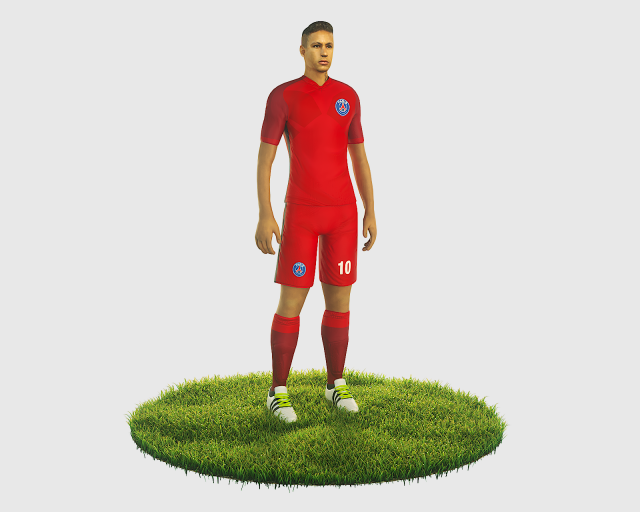 Now it has become mobile: it can have four or five legs and even rollers for mobility. In addition, the model is adjustable in height, but the author left the beautifully tailored leather seat unchanged.
Now it has become mobile: it can have four or five legs and even rollers for mobility. In addition, the model is adjustable in height, but the author left the beautifully tailored leather seat unchanged.
3. Nendo Hourglass Series
Hourglasses have been used since ancient times, and their authentic form has not changed for thousands of years. It may seem that with the development of digital technologies, they have outlived their time, but the founder of the Japanese design bureau Nendo, Oki Sato, known for his conceptual approach to design, proves otherwise. He released a collection of transparent acrylic hourglasses called Time Variations. At the core is the same principle of operation: sand is poured through a narrow passage under the influence of gravity, but Sato decided to play with the speed and angle of pouring.
4. Disco style furniture by Gufram
Dresser with a disco ball from the After Party series by Rotganzen This Italian brand has decided to revive the former glory of the fiery disco era.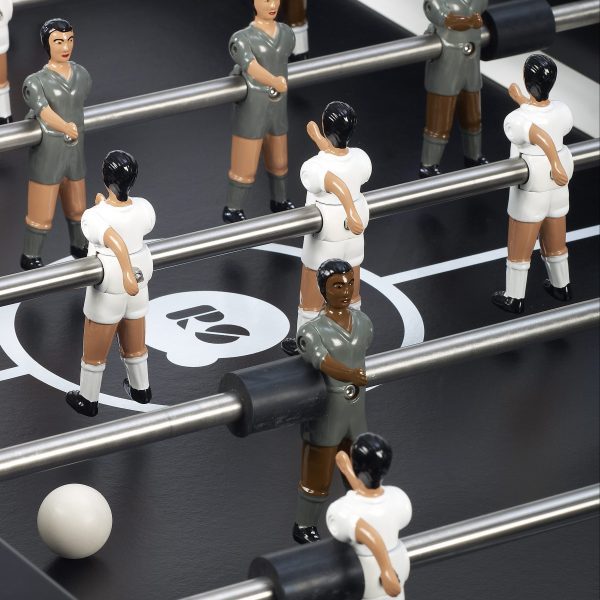 The reason is very specific: the design of nightclubs is an important part of the history of the Gufram factory, and its owner Charlie Veze wanted to bring a piece of the world of discos, nightlife and parties into the house. To do this, he attracted an international team to cooperate. So, Alberto Biagetti and Laura Baldassari from Atelier Biagetti has developed five new modular sofas, reimagining the 80s sofa collection for Gufram. So that everyone in the house can have their own "dance floor", the French studio GGSV came up with a series of Dance Floor carpets in four bright colors: orange, pink, purple and black, and the Dutch bureau Rotganzen made three lacquered cabinets and two coffee tables, where the main attribute is a “flowing” disco ball as a symbol of the transience of entertainment.
The reason is very specific: the design of nightclubs is an important part of the history of the Gufram factory, and its owner Charlie Veze wanted to bring a piece of the world of discos, nightlife and parties into the house. To do this, he attracted an international team to cooperate. So, Alberto Biagetti and Laura Baldassari from Atelier Biagetti has developed five new modular sofas, reimagining the 80s sofa collection for Gufram. So that everyone in the house can have their own "dance floor", the French studio GGSV came up with a series of Dance Floor carpets in four bright colors: orange, pink, purple and black, and the Dutch bureau Rotganzen made three lacquered cabinets and two coffee tables, where the main attribute is a “flowing” disco ball as a symbol of the transience of entertainment.
5. Siren pendant lamp by Dima Loginov
Designer Dima Loginov created the Siren pendant lamp for the Czech glass manufactory Preciosa .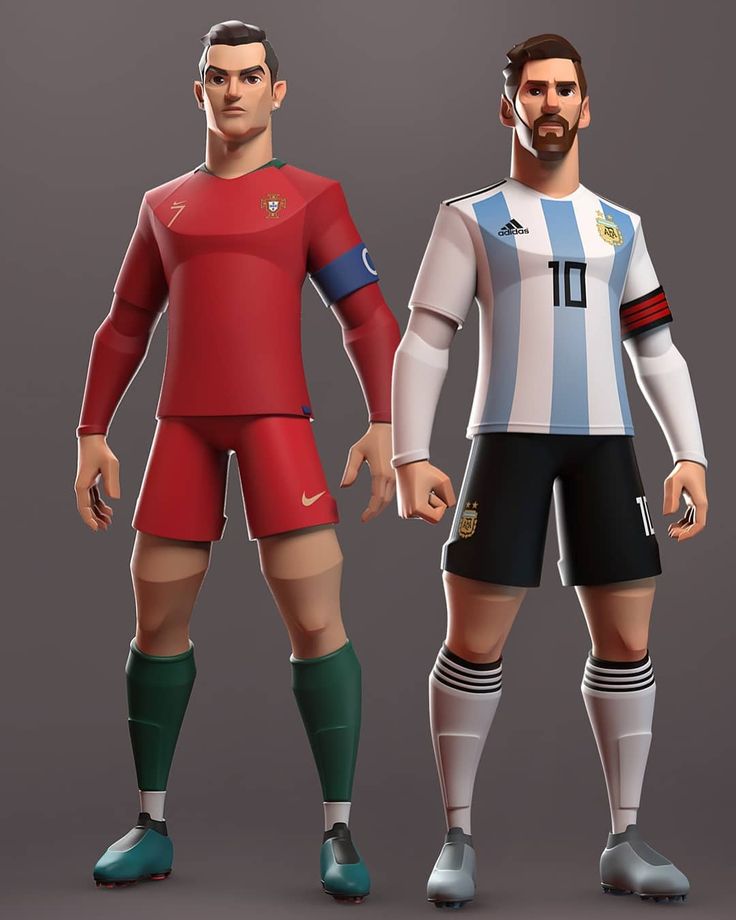 The basis was the classical form of the bell, reproduced in glass of different shades and different degrees of transparency. “Siren is a mystical creation, beautiful, magical, mysterious and dangerously alluring. Fantasy fascinated me with the creation of a bright lamp - simple, stylish and minimalistic, ”says Dima. The lamp itself is a multi-layer ceiling of three "bells" of different sizes, and the glass spheres crowning the tops of the bells serve as a beautiful decorative element.
The basis was the classical form of the bell, reproduced in glass of different shades and different degrees of transparency. “Siren is a mystical creation, beautiful, magical, mysterious and dangerously alluring. Fantasy fascinated me with the creation of a bright lamp - simple, stylish and minimalistic, ”says Dima. The lamp itself is a multi-layer ceiling of three "bells" of different sizes, and the glass spheres crowning the tops of the bells serve as a beautiful decorative element.
6. Table football by Vismara Design
It's no secret that table football is the favorite game of Italians. And at i Saloni 2018, the Italian brand Vismara Design will present the Stadium game table designed by Marco Pozzoli. "This is our tribute to tradition - a product that is both interesting and elegant, ideal for both professional players and amateurs," says the author. The table has solid wood legs, aluminum players and handles, tempered glass details. The furniture is subtly decorated with gold and has a modern, sophisticated design, like all Vismara creations.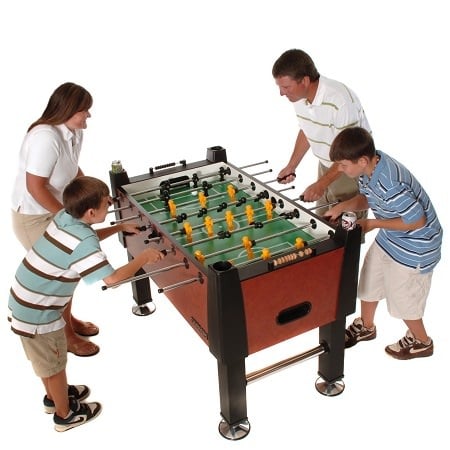
7. Ron Arad Ping Pong Table
Ron Arad designed the 10 LAYERS monochrome ping pong table for the Cosentino . To create it, the designer used ten layers of Silestone® quartz slabs from the Cosentino brand arsenal, and processed the resulting multilayer stone on a CNC machine. As the author himself admits, he deliberately bent it from all sides in order to slow down the game and make the meetings of the players longer. “The idea for the 10 LAYERS table came to me while visiting the Cosentino factory. When you look at modern material production Dekton® and Silestone®, although you are here for a completely different purpose, you can't help but think about what else you can do with this magical material.
8. 3D chairs by Zaha Hadid Architects
Rise chair four avant-garde chairs designed by Zaha Hadid Architects, Ross Lovegrove and Daniel Widrig . They will be unveiled to the public at Milan Design Week 2018 as part of Nagami's Brave New World: Rethinking Design in an Era of New Technology. We particularly liked Zaha Hadid's Bow and Rise armchairs, which are unmistakable in her biomorphic signature. They are made from biodegradable, non-toxic material and printed using a pellet extruder that uses raw plastic particles instead of filament.
They will be unveiled to the public at Milan Design Week 2018 as part of Nagami's Brave New World: Rethinking Design in an Era of New Technology. We particularly liked Zaha Hadid's Bow and Rise armchairs, which are unmistakable in her biomorphic signature. They are made from biodegradable, non-toxic material and printed using a pellet extruder that uses raw plastic particles instead of filament.
9. Foster + Partners and Poltrona Frau armchair series
Foster + Partners has launched the high-back Cove chair designed to provide privacy for people working in busy areas. Made by Poltrona Frau, the furniture is a mini-office with a wide comfortable seat, a USB charging port, an additional power supply and a table, and an enveloping semicircle-shaped headboard reliably protects from everything outside. The chair has already been tested in the passenger terminal of Stockholm airport, and in the near future such clusters, functional for work and leisure, will appear in many public places around the world.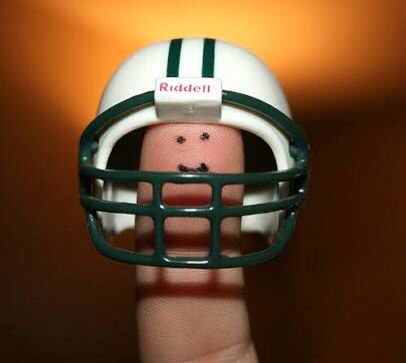
10. New Established & Sons collection
Barbican sofa - design by Konstantin GrchikA new collection for this British brand was developed by a number of stellar authors: the Bouroulleki brothers, Konstantin Grchik , Mauro Paschinelli, who also returned to As design director, co-founder of Established & Sons Sebastian Wrong . It includes sofas, chairs and lamps, one of which, the Feligrana pendant lamp, was designed by Wrong himself. It is handmade from Murano glass and resembles a lollipop or a striped Chinese lantern. Konstantin Grcic designed the Barbican sofa, symbolizing not only the name, but also the rough shape and color of the largest building of modernism in London - the Barbican residential area. Bright pillows enliven the model and make it more interesting.
Feligrana pendant lamp - design by Sebastian Wrong11. InOut collection by Paola Navone
Art director of Gervasoni Paola Navone has developed the InOut collection, ideal for indoor and outdoor furniture, as well as for outdoor furniture spaces.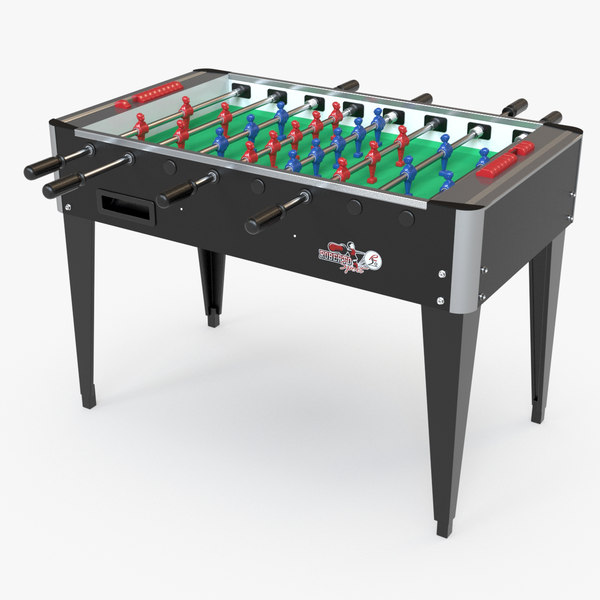 Handmade weaving, natural fibers, wood, ceramics, concrete, beautiful fabrics and natural shades - in all this, the author's handwriting of the famous Italian is unmistakably guessed, her love for nature and the desire to transfer her piece from the outside world into the house: this is why the collection is so dual character. We especially liked the round table with its sculpted concrete base and Carrara marble top, and the series of dining chairs with a white steel frame and high zigzag braided backs.
Handmade weaving, natural fibers, wood, ceramics, concrete, beautiful fabrics and natural shades - in all this, the author's handwriting of the famous Italian is unmistakably guessed, her love for nature and the desire to transfer her piece from the outside world into the house: this is why the collection is so dual character. We especially liked the round table with its sculpted concrete base and Carrara marble top, and the series of dining chairs with a white steel frame and high zigzag braided backs.
Inout 855 Table 838
12. A series of stools from Ineca Hans and Mark Laban
A few years ago, Dutch designer Inkea Hans made a pintra stool for the Finnish factory ithtala . This stackable item can also serve as a table or step chair for kids to make it easier for them to climb somewhere. In the spring Hans along with Thomas Heatherwick, Jasper Morisson and Bethan Laura Wood took part in the Designers Select Designers exhibition, organized by the London gallery Aram Gallery on the occasion of the 15th anniversary.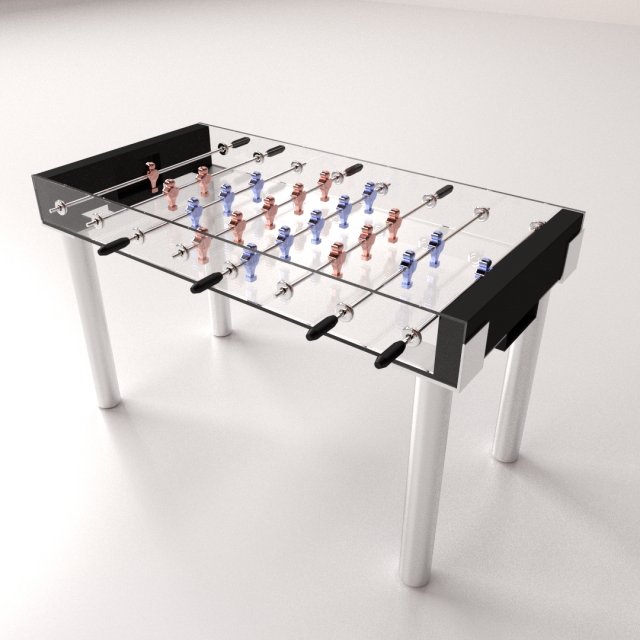 There, the designer presented her creation along with Mark Laban's latest Rustic Stools, made from dyed wood fibers digitally on a device programmed to create a ribbed surface.
There, the designer presented her creation along with Mark Laban's latest Rustic Stools, made from dyed wood fibers digitally on a device programmed to create a ribbed surface.
13. Rodolfo Parente collection for Pouenat
Glory consoleSpecializing in artistic forging and metal work, the old French manufactory Pouenat has released a collection of furniture and lighting designed by designer Rodolfo Parente. Each year, Pouenat invites a local designer to create a capsule collection that promotes contemporary French design. This year it was Parente, who developed 15 exclusive items, distinguished not only by interesting engraving, etching, materials, but also by the original handling of the typology of objects.
Sunset pendant lamp14. Le Morandine vase collection by Sonia Pedrazzini
Following a limited edition of candles based on the work of the Italian painter and graphic artist Giorgio Morandi, designer Sonia Pedrazzini turned the Le Morandine vase collection into ceramic still lifes revealing the poetic nature of the paintings. Resembling small graceful sculptures, they are made in the artist's characteristic color palette, which is distinguished by dullness and chalk. With the help of design tools, Pedrazzini brings these objects into three-dimensional space, offering to combine them in his own way, as the artist did on his canvases. Sonya will officially present her collection during Milan Design Week in the flagship perfume boutique Amouage in the heart of the Brera area.
Resembling small graceful sculptures, they are made in the artist's characteristic color palette, which is distinguished by dullness and chalk. With the help of design tools, Pedrazzini brings these objects into three-dimensional space, offering to combine them in his own way, as the artist did on his canvases. Sonya will officially present her collection during Milan Design Week in the flagship perfume boutique Amouage in the heart of the Brera area.
Photo: Akihiro Yoshida, Leonardo Scotti, Asa Bruno, Cosentino, Zaha Hadid Architects, Aaron Hargreaves, Peter Guenzel, Markus Jans, press archives
Amouage, Aram Gallery, Atelier Biagetti, Cappellini, cosentino, Dekton®, Designers Select Designers, Established & Sons, Foster + Partners, Gervasoni, GGSV, Gufram, i Saloni 2018, Iittala, Nagami, Nendo, Poltrona Frau, Pouenat, Preciosa, Rotganzen Silestone® Vismara Design Zaha Hadid Architects Laban, Marco Pozzoli, Mauro Pascinelli, Paola Navone, Patricia Urquiola, product design, Rodolfo Parente, Ron Arada, Ross Lovegrove, Sebastian Wrong, Sonia Pedrazzini, ss-tapis, Thomas Heatherwick, Charlie Vese
Game art creation | schastlivye-lyudi
Game design is the art of applying design and aesthetics to create a game to facilitate interaction between players for playful, healthy, educational, or simulation purposes. Game design can be applied to games and, increasingly, to other interactions, especially virtual ones (see gamification).
Game design can be applied to games and, increasingly, to other interactions, especially virtual ones (see gamification).
Game design creates goals, rules, and challenges to define a sport, board game, casino game, video game, role play or simulation that produces the desired interactions among its participants and possibly spectators.
Academically, game design is part of game studies, while game theory studies strategic decision making (primarily in non-game situations). Games have historically inspired original research in probability, artificial intelligence, economics, and optimization theory. The application of game design to the self is a current research topic in metadesign.
History
Sports (see history of sports), gambling and board games are known, respectively, to have existed for at least ten thousand, six thousand, and five thousand years.
Folk process
Board games played today, whose descent can be traced back to ancient times, include chess, go, pachisi, backgammon, mahjong, mancala, and pickup sticks.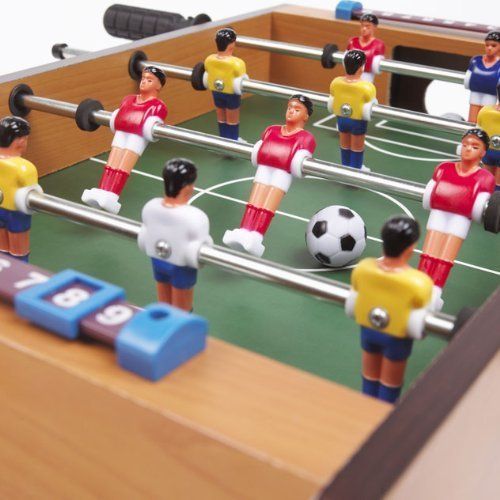 The rules of these games were not codified until early modern times and their characteristics gradually developed and changed over time through the folk process. Given this, these games are not believed to have had a designer or were the result of a design process in the modern sense.
The rules of these games were not codified until early modern times and their characteristics gradually developed and changed over time through the folk process. Given this, these games are not believed to have had a designer or were the result of a design process in the modern sense.
Following the rise of commercial game publishing in the late 19th century, many games that formally developed through folk processes became commercial properties, often with custom scoring pads or pre-made material. For example, the similar public domain games Generala, Yacht, and Yatzy led to the commercial game Yahtzee in the mid-1950s.
Today, many commercial games such as Taboo, Nonsense, Pictionary, or Time! are derived from traditional indoor games. The adaptation of traditional games to become commercial properties is an example of game design.
Similarly, many sports, such as football and baseball, are the result of folk processes, while others have been developed, such as basketball, invented in 1891 by James Naismith.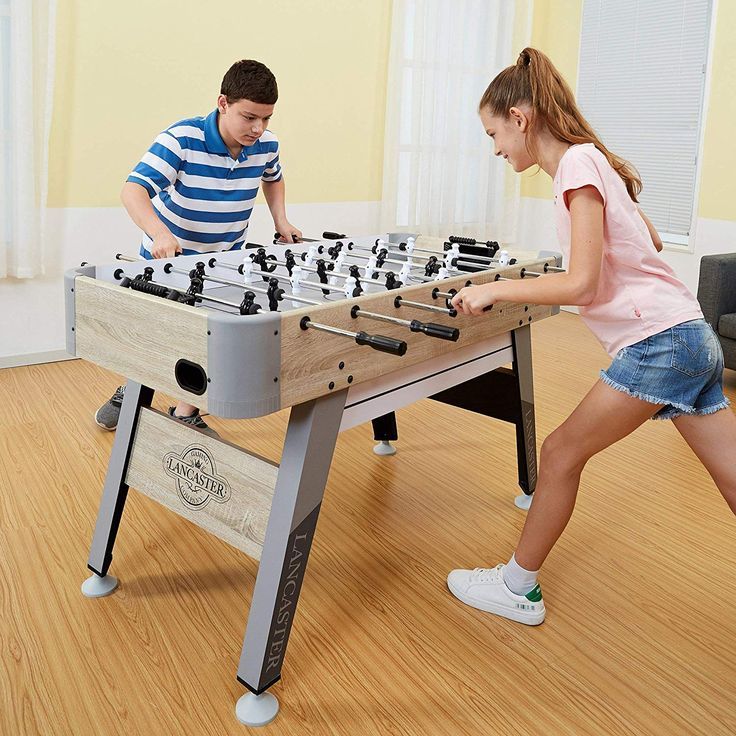
New Media
Technological advances have provided new media for gaming throughout history. The printing press allowed packs of card games adapted from Mahjong tiles to be mass-produced, leading to many new card games. Accurate topographic maps, produced as lithographs and provided free to Prussian officials, helped popularize wargaming. Cheap binding (printed stickers wrapped around cardboard) led to mass-produced board games with custom boards. Inexpensive (hollow) figurine lead casting contributed to the development of miniature wargaming. Cheap custom dice led to poker dice. Flying discs led to disc golf and Ultimate. Personal computers contributed to the popularity of computer games, leading to the widespread availability of game consoles and video games. Smartphones have led to a rapid increase in mobile gaming.
The first games in a new environment are often adaptations of older games. Pong, one of the first widespread video games, adapted table tennis. Later games would often exploit the distinctive features of the new environment. Adapting older games and creating original games for new media are both examples of game design.
Later games would often exploit the distinctive features of the new environment. Adapting older games and creating original games for new media are both examples of game design.
Theory
Game research or game theory is a discipline that deals with the critical study of games, game design, players and their role in society and culture. Until the end of the twentieth century, the scientific study of games was rare and limited to areas such as history and anthropology. While the video game revolution took off in the early 19The 80s, too, is an academic interest in games leading to a field that draws on diverse methodologies and philosophical schools. These influences can be characterized broadly in three ways: the sociology approach, the humanities approach, and the industry and engineering approach.
Generally speaking, the social scientific approach was interested in the question "What do games do to people?" Using tools and methods such as surveys, controlled laboratory experiments and ethnography researchers have examined both the positive and negative impacts that playing games could have on humans.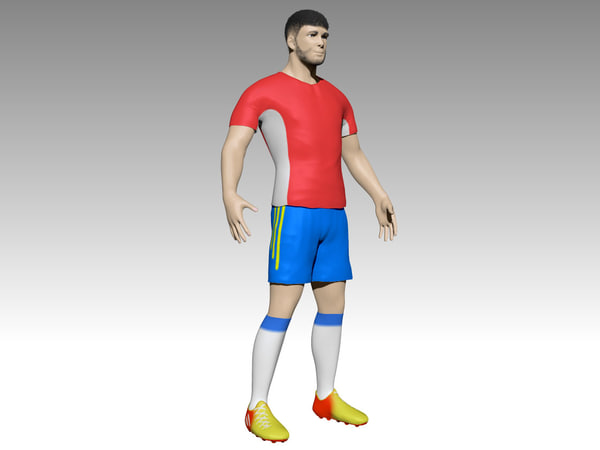
A more sociologically informed study sought to move away from simplistic ideas of playing as either 'negative' or 'positive', but rather seek to understand its role and location in the complexities of everyday life.
In general terms, the humanities approach was interested in the question "What implications are made through games?" Using tools and methods such as interviews, ethnographies and participant observation, researchers have explored the various roles that video games play in people's lives and actions along with the meaning they assign to their experiences.
From an industry standpoint, a great study of game studies can be seen as an academic response to the video game industry's questions regarding the products it creates and sells. The main question of this approach, agreements with can be summarized as, "How can we create better games?" with an accompaniment, "What Makes a Good Game?" "Good" can be taken to mean many different things, including providing an interesting and engaging experience, being easy to learn and play, and being innovative and having new experiences.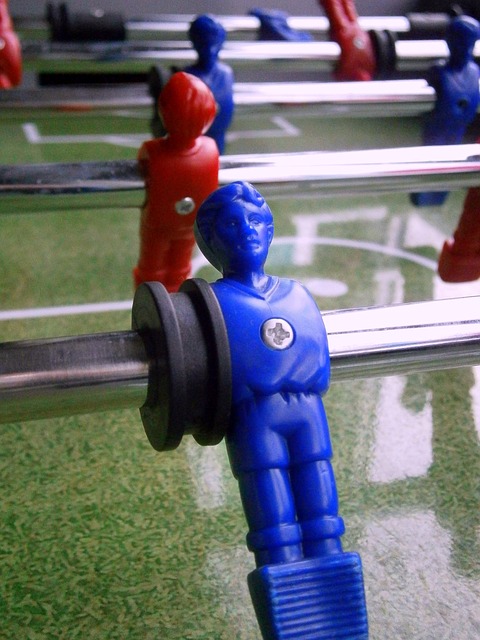 Different approaches to studying this problem have included looking at describing how to design games and extracting guidelines and rules of thumb for making better games
Different approaches to studying this problem have included looking at describing how to design games and extracting guidelines and rules of thumb for making better games
Strategic decision making
Game theory is the study of strategic decision making. Specifically, it is "the study of mathematical models of conflict and cooperation between intelligent rational decision makers". An alternative term proposed "as a more descriptive name for the discipline" is interactive decision theory.
The subject first addressed zero-sum games, such that one person's profit exactly equals the other participant's or participants' net loss. Today, however, game theory refers to a wide range of behavioral relationships and has evolved into an umbrella term for the logical side of decision science.
Games studied in game theory are well-defined mathematical entities. To be fully defined, a game must define the following elements: the players of the game, the information and actions available to each player at each decision point, and the payoff for each outcome.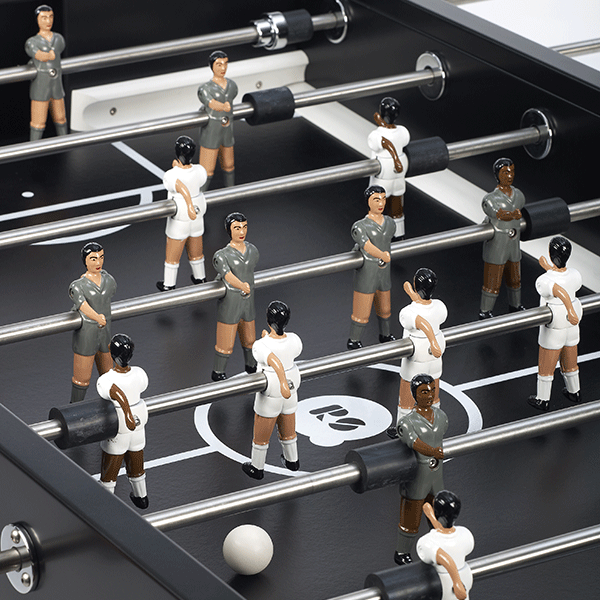 (Rasmusin refers to these four "essential elements" by the acronym "PAPI".) A game theorist typically uses these elements, along with the notion of deciding their choice, to derive a set of each player's equilibrium strategies such that when these strategies are used , no player can profit by unilaterally deviating from their strategy. These equilibrium strategies define an equilibrium for the game - a steady state in which either one outcome occurs or a series of outcomes occur with a known probability.
(Rasmusin refers to these four "essential elements" by the acronym "PAPI".) A game theorist typically uses these elements, along with the notion of deciding their choice, to derive a set of each player's equilibrium strategies such that when these strategies are used , no player can profit by unilaterally deviating from their strategy. These equilibrium strategies define an equilibrium for the game - a steady state in which either one outcome occurs or a series of outcomes occur with a known probability.
Design elements
Games can be characterized by "what the player does". This is often referred to as gameplay. The major key elements defined in this context are the tools and rules that define the overall context of the game.
Game tools
Games are often classified by the components required to play them (eg miniatures, ball, cards, board and pieces or computer). In places where the use of leather is well established, the ball has been a popular part of the game throughout recorded history, leading to the worldwide popularity of ball games such as rugby, basketball, football, cricket, tennis and volleyball. Other tools are more special to a certain area. Many countries in Europe, for example, have unique standard card decks. Other games such as chess can be traced primarily through the development and development of its game pieces.
Other tools are more special to a certain area. Many countries in Europe, for example, have unique standard card decks. Other games such as chess can be traced primarily through the development and development of its game pieces.
Many game tools are symbols meant to represent other things. The symbol can be a pawn on the board, game money, or an intangible item such as a point earned.
Games such as hide and seek or tag do not use an obvious tool; rather, their interactivity is determined by the environment. Games with the same or similar rules may have different gameplay if the environment is changed. For example, hide-and-seek in a school building is different from the same game in the park; racing cars can be radically different depending on the track or street course, even with the same cars.
Rule development
Whereas games are often characterized by their tools, they are often defined by their rules. While the rules are subject to change and change, enough change in the rules usually results in a "new" game.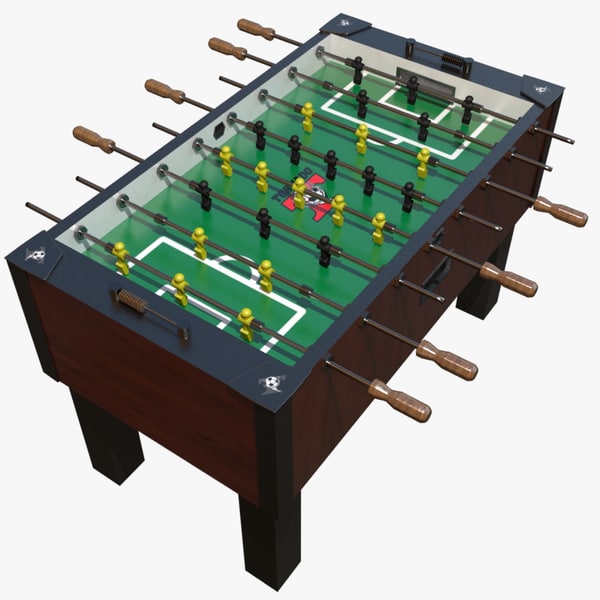 There are exceptions to this, in which some games deliberately involve changing their own rules, but even then there are often immutable meta-rules.
There are exceptions to this, in which some games deliberately involve changing their own rules, but even then there are often immutable meta-rules.
The rules generally define the order of the turn, the rights and obligations of the players, and the objectives of each player. The player's rights may include when they can spend resources or move symbols.
Victory conditions
General victory conditions first to accumulate a certain quota of points or symbols (as in Catan Settlers), having the highest number of symbols at the end of the game (as in Monopoly), or some ratio of game symbols to those of the opponent (as in the defeat of chess).
Single or multiplayer
Most games require multiple players. However, single player games are unique in regards to the type of difficulty the player faces. Many games described as "single" can actually be called puzzles or recreations. Unlike a game with multiple players competing with or against each other to achieve the goal of the game, a single player game is a battle solely against an element of the environment (an artificial opponent), against one's own skills, against time, or against chance.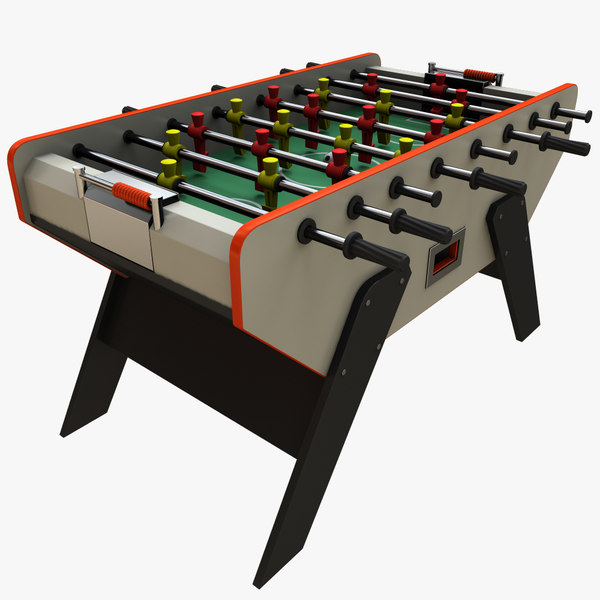
Storyline and plot
Luck and strategy
The tools and rules of the game will lead to her claim skill, strategy, luck or a combination of these, and are classified accordingly.
Skill games include motor skill games such as wrestling, tug of war, hopscotch, target shooting, and stake and mental skill games such as checkers and chess. Strategy games include checkers, chess, go, arimaa, and tic-tac-toe, and often require special equipment to play them. Gambling includes games of chance (blackjack, mahjong, roulette, etc.) as well as snakes and ladders and rock, paper, scissors; most require equipment such as cards or dice.
Most games contain two or all three of these elements. For example, American football and baseball involve both motor skill and strategy, while tiddlywinks, poker, and Monopoly combine strategy and chance. Many cards and board games combine all three; most trick-taking games include the skill, strategy and element of chance, as do many strategy board games such as Risk, Settlers of Catan and Carcassonne.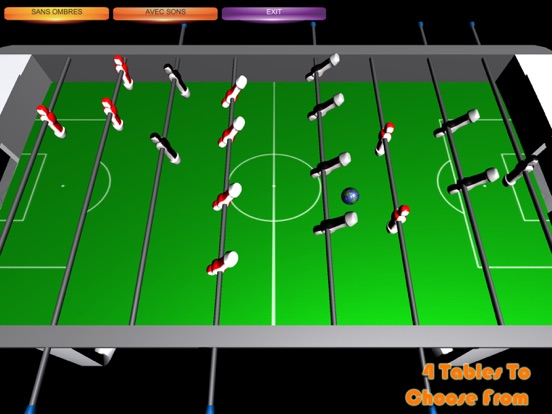
Use as an educational tool
Learning through play children can develop social and cognitive skills, mature emotionally, and gain the self-confidence required to participate in new experiences and environments.
Key ways young children learn include play, being with other people, being active, exploring and experiencing new experiences, talking to themselves, connecting with others, coping with physical and mental challenges, being shown how to do new things by practicing and repeating skills and having fun.
The game develops children's knowledge of the content and provides children with the opportunity to develop social skills, knowledge and disposition to learn. Game-based learning is based on the Vygotskian model of scaffolding, where the teacher pays attention to certain elements of the game's activity and provides support and feedback on the child's learning. When children participate in real and imaginary activities, play can be challenging in children's minds. To enhance the learning process, sensitive intervention can be provided with adult support when needed during play-based learning.
To enhance the learning process, sensitive intervention can be provided with adult support when needed during play-based learning.
Development process
Development team
Game artist
Game artist is an artist who creates art for one or more game types. Game artists are responsible for all aspects of game development that call for fine art. Game artists are often celebrated in role-playing games, collectible card games, and video games.
Testing
Game testing, a subset of game development, is the process of testing video game quality control software. The primary function of game testing is to discover and document software defects (aka bugs). Interactive entertainment software testing is a highly technical area requirement of computational expertise, analytical competence, critical evaluation skills and endurance. In recent years, the testing area of the game has come under fire for being overly stressful and unrewarding, both financially and emotionally.![]()
Types of game design
Board games
Board game design - development of the rules and presentation aspects of a board game. When a player takes part in a game, it is the player's self-obedience to the rules that creates a sense of purpose for the duration of the game. Keeping players interested throughout the gameplay experience is the goal of board game design. To achieve this, board game designers emphasize various aspects such as social interaction, strategy and competition, and target players of differing needs, providing, in short, against the long game and luck against skill. Beyond that, the design of a board game reflects the culture in which the board game is produced.
The oldest board games known today are over 5,000 years old. They are often abstract in character, and their design is primarily focused on a basic set of simple rules. Of those still played today, games like go (c.400BC), mancala (c.700AD), and chess (c.600AD) have gone through many introductions and/or rule changes.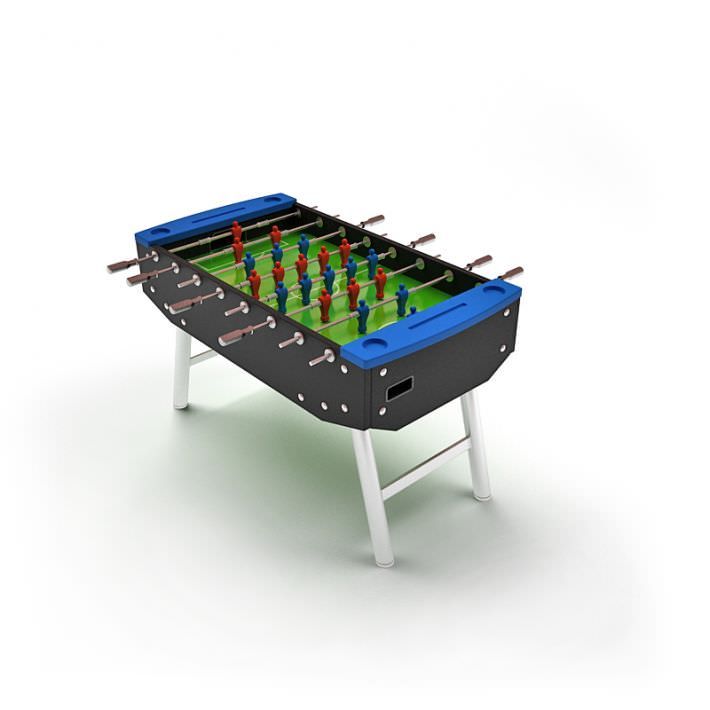 In the case of chess, for example, new variants are constantly being developed to focus on certain aspects of the game, or just for the sake of change.
In the case of chess, for example, new variants are constantly being developed to focus on certain aspects of the game, or just for the sake of change.
Traditional board games date from the 19th and early 20th century. Whereas ancient board game design was primarily focused on rules alone, traditional board games were often influenced by Victorian mores. Academic (such as history and geography) and moral didacticism were important design features for traditional games, and the puritanical associations between dice and the devil meant that early American computer game developers eschewed their use in board games entirely. Even traditional games that did use dice like Monopoly (based on 1906 Master's Game) were rooted in educational efforts to explain political concepts to the masses. By the 1930s and 1940s, board game design began to emphasize entertainment over education, and characters from comics, radio broadcasts, and (in the 1950s) television shows began to be shown in adaptations of the board game.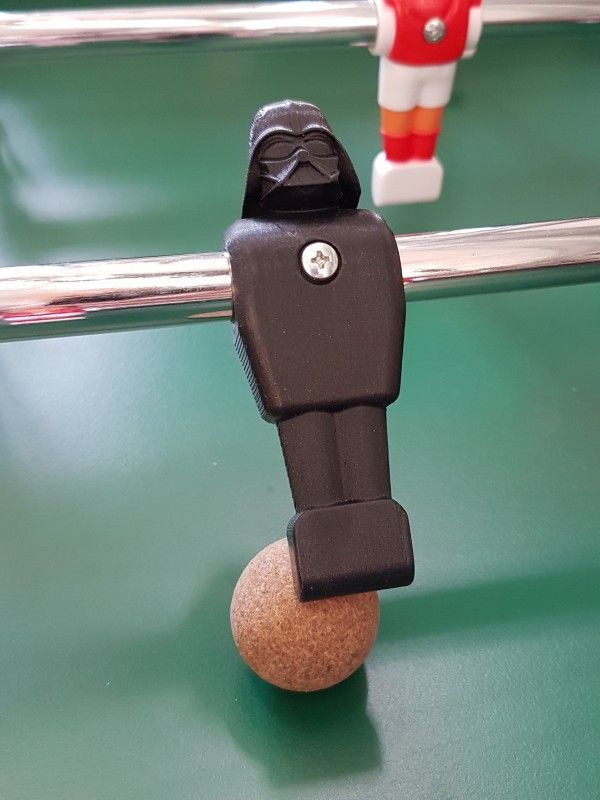
Recent developments in modern board game design can be traced back to the 1980s in Germany and have led to an increased popularity of "German style board games" (also known as "Eurogames" or "designer games"). The design emphasis of these board games is to give players a meaningful choice. This is manifested by eliminating elements like randomness and luck to be replaced by skill, strategy and resource competition, removing the potential for players to fall irretrievably behind in the early stages of the game, and reducing the number of rules and possible replay options to produce what Alan R. Moon described it as "nice game design". The concept of elegant game design was defined by Leon Neifah of the Boston Globe, as related to Michali Csikszentmihaly's concept of "flow" from his book 1990, "Flow: The Psychology of Optimal Experience."
Modern technological advances have had the effect of democratizing the game design board with services like Kickstarter providing designers with substantial startup capital and tools like 3D printers facilitating the production of game pieces and board game prototypes.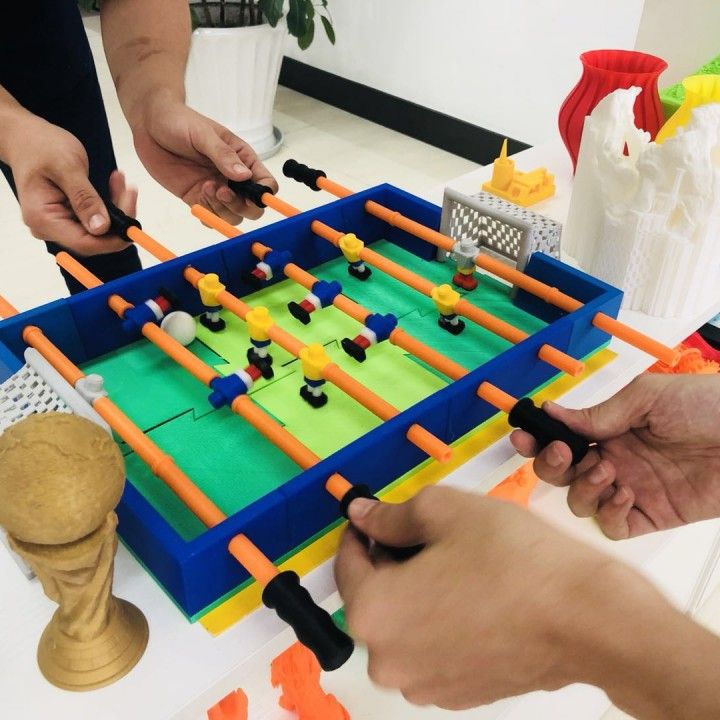 A modern adaptation of number games is miniature wargames like Warhammer 40,000.
A modern adaptation of number games is miniature wargames like Warhammer 40,000.
Card games
The design of card games is compressed by the type of deck of cards, like Tarot or Latin decks in four suits. Card games can be played for fun, like Go Fish, or for profit, like Poker.
In Asian cultures, special sets of tiles may serve the same function as cards, as in mahjong, a game similar to (and thought to be a distant ancestor of) the Western card game rummy. Western domino games are believed to have evolved from Asian tile games in the 18th century.
was the first collectible card game (or "trading card game") in 1993.
The line between the card and board games is not clear, the same number of card games, such as solitaire, include the card game to form a "table", spatial location or government. Many board games, in turn, use specialized decks of cards as randomization devices, such as a subtype of wargames called card-driven wargames.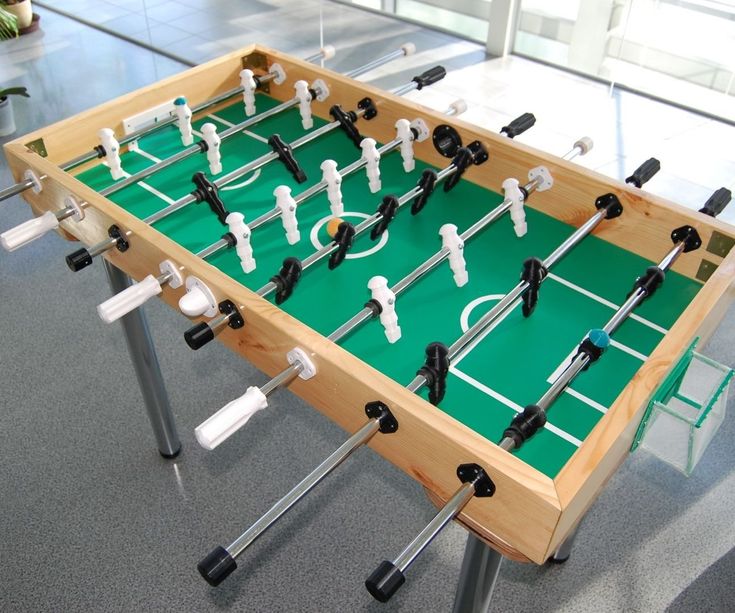
Dice games
Dice games are among the oldest known games and have often been associated with gambling. Not betting dice games such as Yatzy, Poker dice or Yahtzee became popular in the mid-20th century.
The line between dice and board games is not clear, as dice are often used as randomization devices in board games such as Monopoly or Risk, serving as central game drivers in games such as Backgammon or Pachisi.
Casino Games
The design of a casino game may entail creating an entirely new casino game, creating a variation on an existing casino game, or creating a new side bet on an existing casino game. Casino game mathematician Michael Shackleford noted that it is much more common for casino game designers today to make successful changes than completely new casino games. Gambling columnist John Grochowski points to the emergence of community-style slot machines in the mid 19The 90s, for example, as a successful change to an existing type of casino game.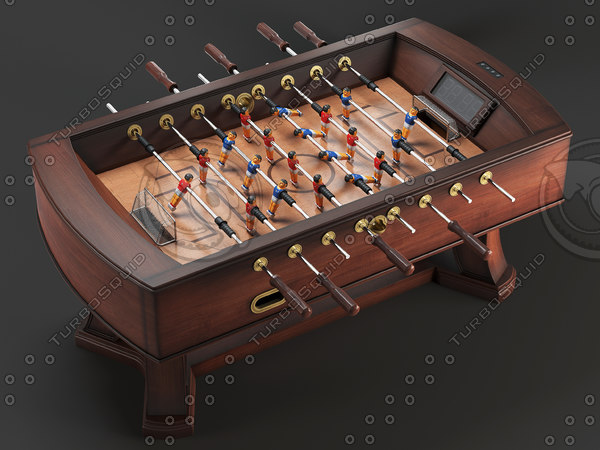 Unlike most other games, which are designed primarily for the benefit of the player, one of the central goals of casino game design is to optimize the house edge and maximize player revenue. Successful casino game design works provide entertainment to the player and income for the gambling house. To maximize player entertainment, casino games are designed with simple, easy-to-learn rules that emphasize winning (i.e., whose rules list many win conditions and few loss conditions), and that provide players with a variety of different gameplay positions (e.g., card hand). The cost of player entertainment has also been increased by providing players with familiar playing elements (such as dice and cards) in new casino games. To maximize success for the gambling house, casino games are designed to be easy for croupiers to operate and for pit managers to watch. The two most fundamental rules of casino game design are that games must be non-fraudable (including being nearly immune to gambling advantage) and that they must mathematically favor winning the house.
Unlike most other games, which are designed primarily for the benefit of the player, one of the central goals of casino game design is to optimize the house edge and maximize player revenue. Successful casino game design works provide entertainment to the player and income for the gambling house. To maximize player entertainment, casino games are designed with simple, easy-to-learn rules that emphasize winning (i.e., whose rules list many win conditions and few loss conditions), and that provide players with a variety of different gameplay positions (e.g., card hand). The cost of player entertainment has also been increased by providing players with familiar playing elements (such as dice and cards) in new casino games. To maximize success for the gambling house, casino games are designed to be easy for croupiers to operate and for pit managers to watch. The two most fundamental rules of casino game design are that games must be non-fraudable (including being nearly immune to gambling advantage) and that they must mathematically favor winning the house.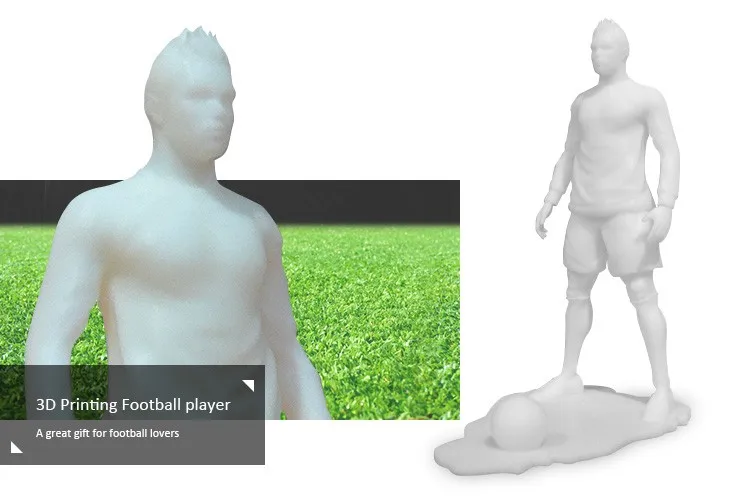 Shackleford suggests that optimal casino game design should give the house a margin of less than 5%.
Shackleford suggests that optimal casino game design should give the house a margin of less than 5%.
RPG
RPG design requires the establishment of a setting, characters, and ground rules of gameplay or mechanics. After an RPG is produced, additional design elements are often created by the players themselves. In many cases, for example, character creation is left to the players. Likewise, the progression of a role-play is determined largely by the physical education teacher, whose individual campaign design can be guided by one of several role-play theories.
There is no central core to tabletop RPG theory because different people want so many different things from games. Probably the best-known category of RPG theory, GNS Theory suggests that people want one of three things from a game - a better, more interestingly complex game, to create a more interesting story, or better simulation - in other words, better rules to support word formation. The GNS theory was abandoned by its creator, partly because it neglects emotional investment, and partly because it simply didn't work properly. There are methods people use (such as dice pools) to better create the game they want - but without a consistent goal or agreement for what makes for a good game, there is no overarching theory usually agreed upon.
There are methods people use (such as dice pools) to better create the game they want - but without a consistent goal or agreement for what makes for a good game, there is no overarching theory usually agreed upon.
Sports
Sports games are made with all precise rules.
Video games
Video game design is a process that takes place in the pre-production phase of video game development. In the video game industry, game design describes the creation of the content and rules of a video game. The purpose of this process for a game developer is to enable players to make meaningful decisions about whether to play the game. Video game design elements such as the establishment of fundamental gameplay rules serve as the framework within which players will operate, while the addition of story structures provides players with a reason to care about playing the game. In order to set the rules and narrative, an internally coherent game world is created, requiring visual, audio, and programming development for the world, character, and level design.